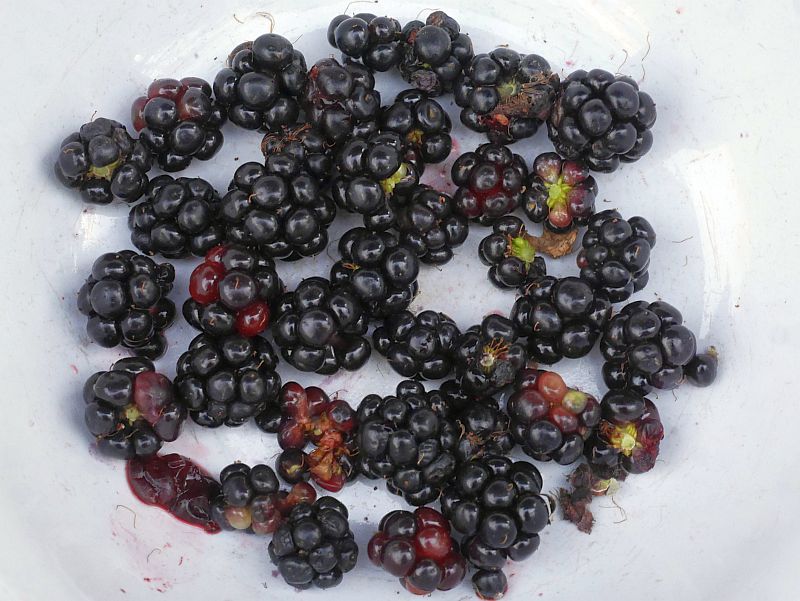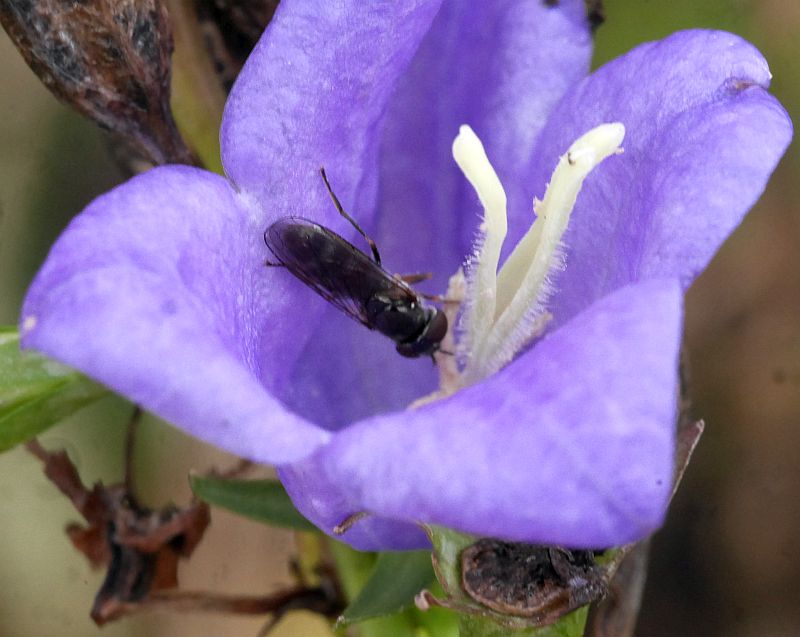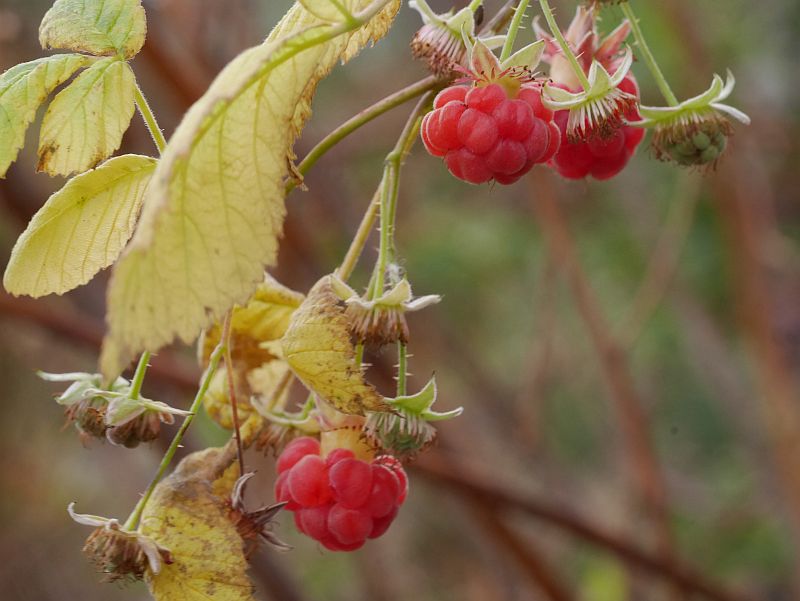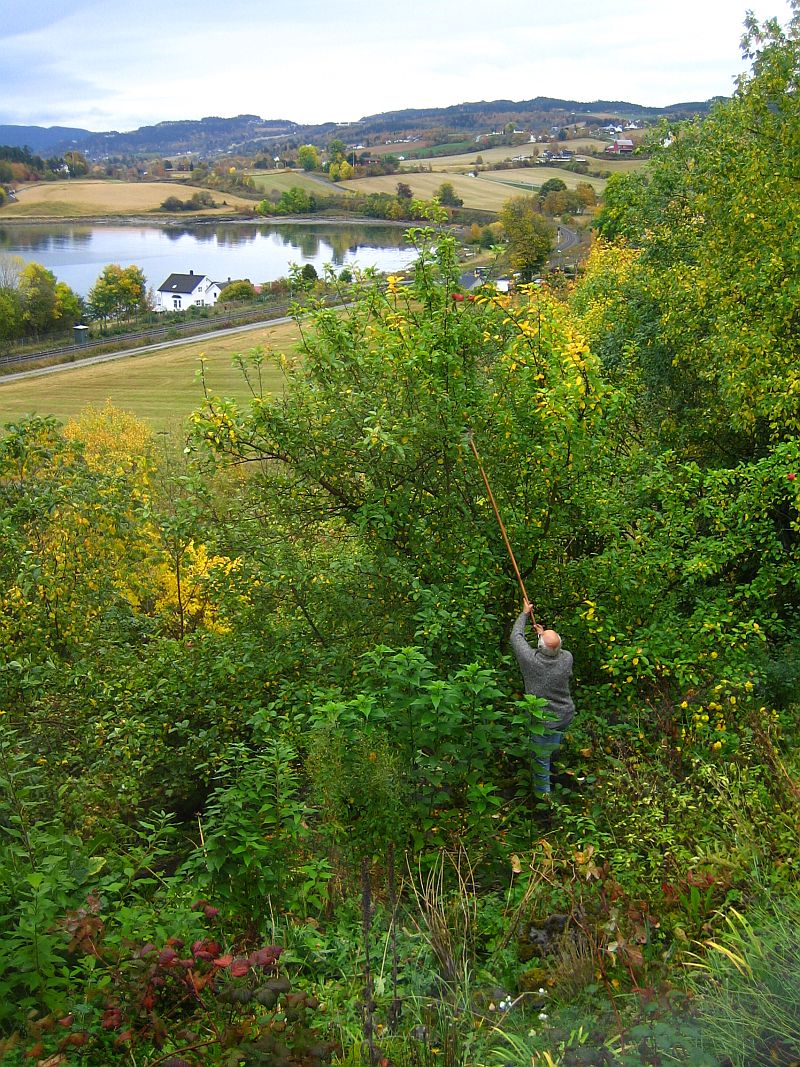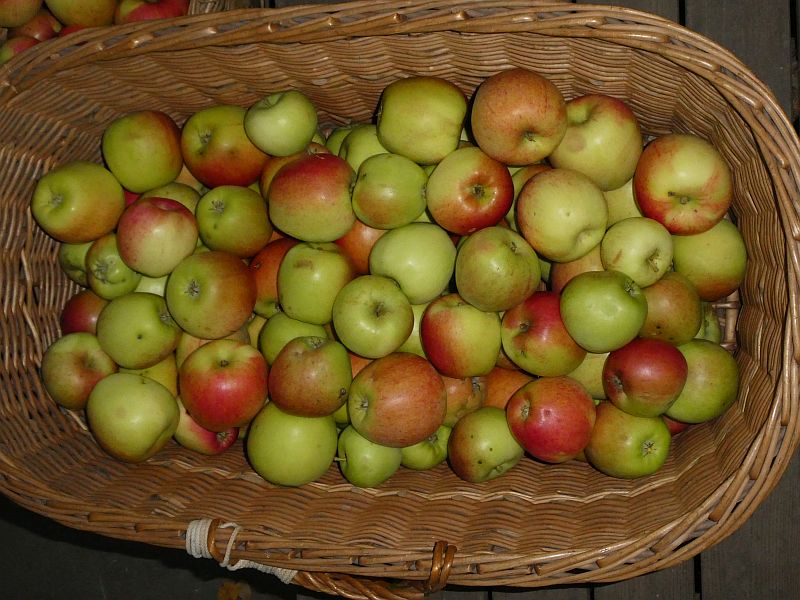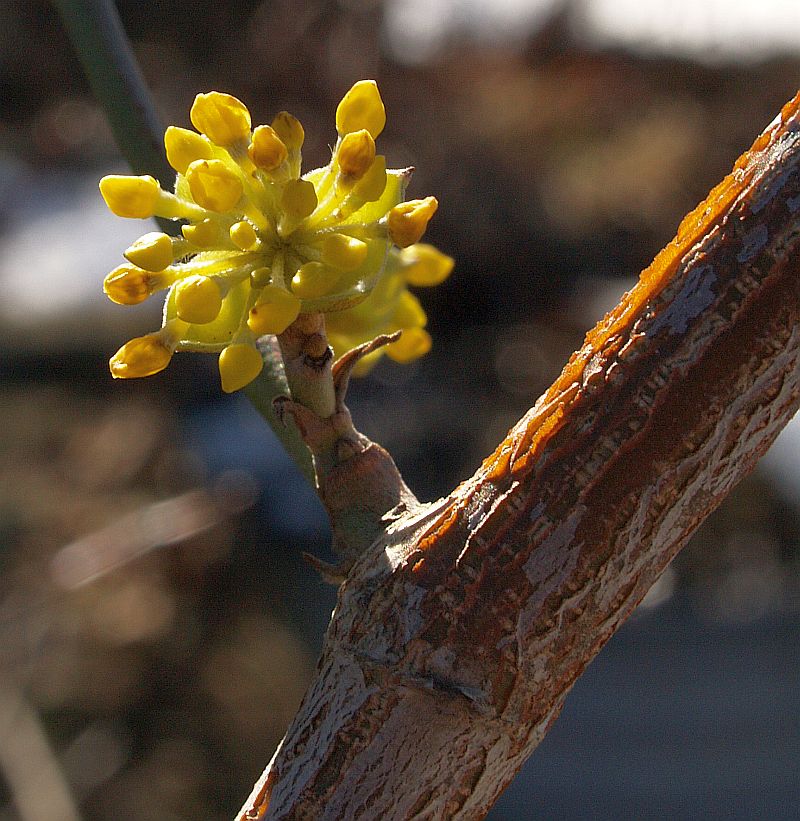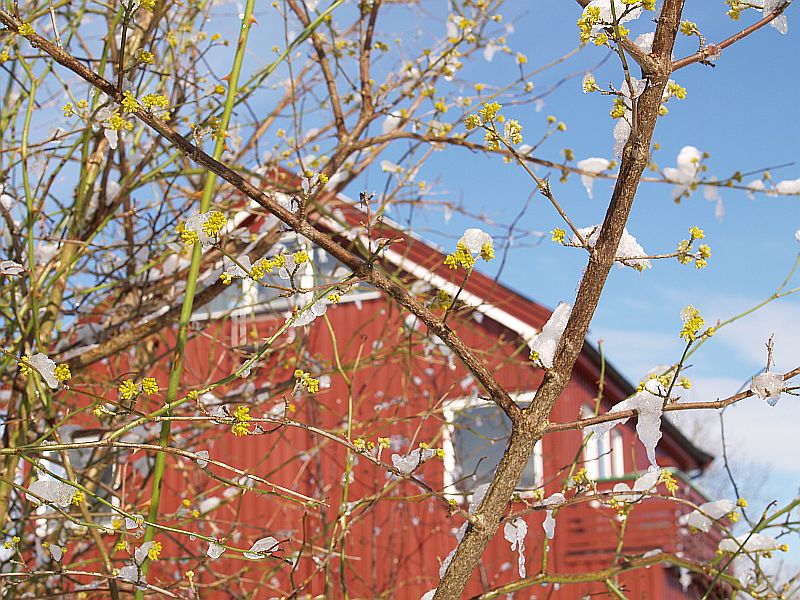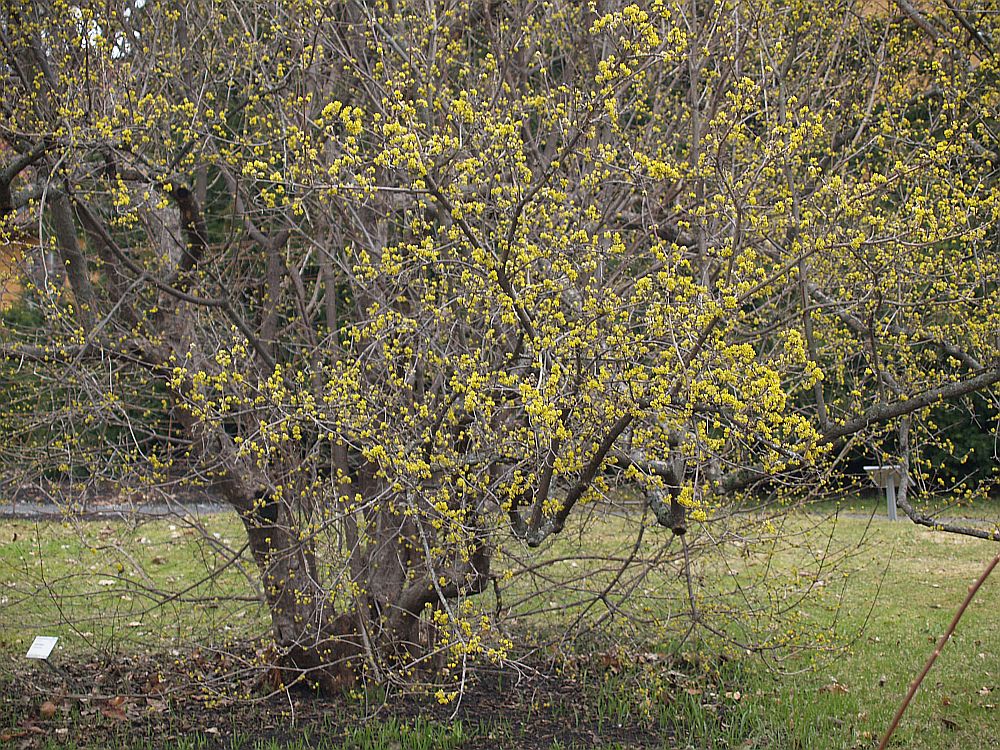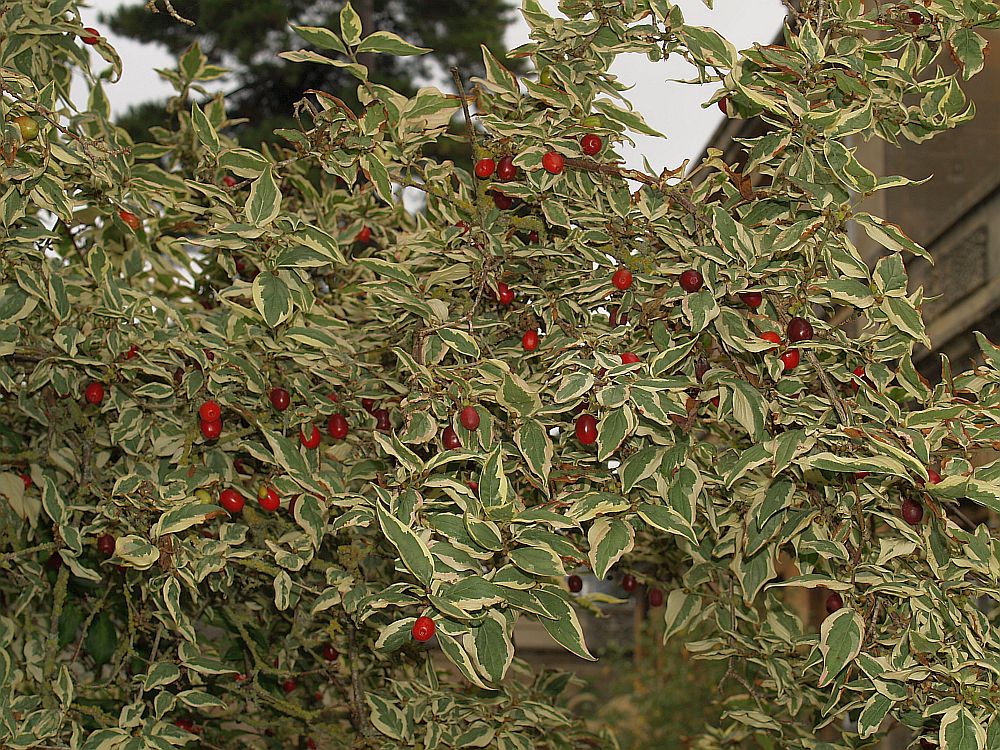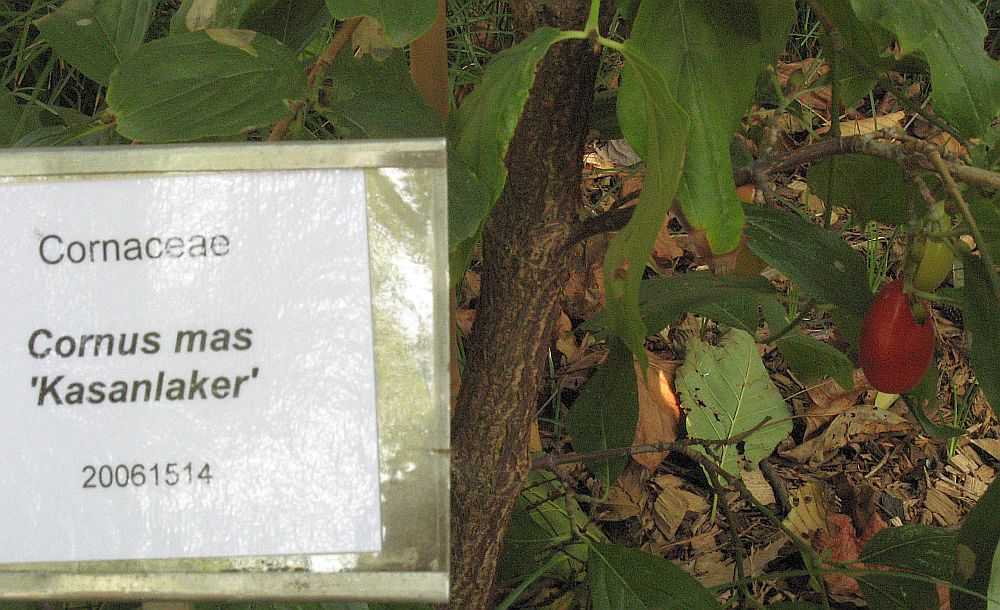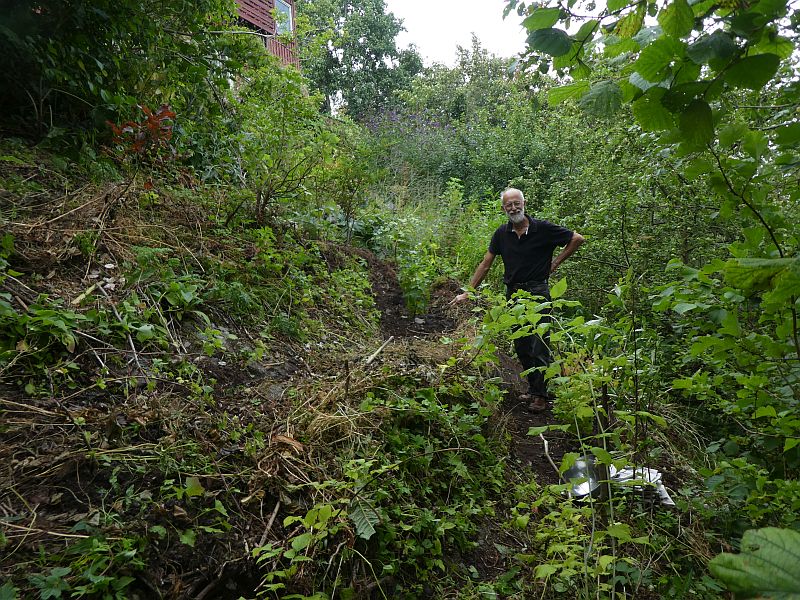I thought the berry season was over with the frosts at the end of October, but with the air temperature in November so far above 0c I was able to harvest a few last blackberries (the bush has started flowering again) and 4 raspberries! Various pollinators had also emerged from hibernation including two hoverflies.
Category Archives: Fruit
Apple Harvest
Due to the really cold May this year, the apple trees (Aroma) tried and tried to flower but seemed to give up. I was surprised nevertheless that some fruit did result and in compensation for the low number of apples, the individual apples were bigger so that the total yield was much better than feared! There were no plums and only a few cherries.
Kiwi blossom in Malvik
It was probably over 25 years ago I sowed some seed of a kiwi (Actinidia deliciosa) from the supermarket just for fun! Little did I know that it would be flowering in my garden in the year 2020. The seed germinated and I accidentally left the plants in a pot in the garden all winter. I had lost the label and I didn’t recognise the plant when it leafed out in spring. A gardening friend (Alvilde) visiting that summer did recognised it and I recalled having sowed those seeds. It also showed that it was much more hardy than I imagined. I therefore planted two plants in the warmest spot I could find in the garden against the south side of the house. Unfortunately, one of the two plants died and you need two to get fruit….not that I had any pretense of ever eating my own kiwis (I’d read that Actinidia deliciosa needs temperatures over 20C for 3-4 months to ripen fruit). Some summers, we only have 10-20 such days! I carried on growing it more of a curiosity than anything else…a plant one doesn’t expect to see at 63.5N! Then in 2007, I had a visit from a Swedish gardening club (STA). I told them about the kiwi and one of them commented that it was flowering. I hadn’t noticed the two flowers:
I never saw a flower again, until just a week ago when I lifted one of the branches and discovered a couple of flowers well hidden under the leaves. On closer examination there were about 10 flowers altogether! A mild winter followed by record temperatures in June had stimulated it to flower “profusely” (of course, I could have missed the odd flower in the past). I didn’t round to taking pictures for several days by which time the flowers were over (see below). Given that I will never have my own fruit, I wonder if other parts of kiwis can be eaten. I found one reference to the leaves being edible on a kiwi web site. Can anyone confirm? There are references in the literature to both Actinidia arguta and Actinidia polygama shoots being eaten.
From one a day to over 20!
I only eat fruit that I grow or pick in the woods myself. For 5 months from November I only eat fresh stored apples from the cellar and they lasted right to the end of April this year. I don’t miss oranges, bananas or any of that commercial long distance fruit that I haven’t eaten regularly for over 25 years or more. Now until fresh fruit is once again available in July, I move suddenly from 1 species a day to over 20 a day, now using rehydrated dried fruit (including apples!), a mix of sweet, sour and bitter / strong tasting fruits (the same idea as the mixed salad!)
Includes: Apples (epler), sour cherries (surkirsebær), gooseberries (stikkelsbær), redcurrants (rips), blackcurrant (solbær), saskatoons (junisøtbær), Aronia, Berberis, Viburnum trilobum and Vibrnum opulus, bilberries (blåbær), bog bilberry (blokkebær), cloudberry (molte), plums (plommer), raspberries (bringebær), black raspberries (svartbringebær), Cornus mas, haskaps, Ribes odoratum, wild strawberries and a couple of wild Ribes spp. grwoing in the garden.
Join the SLOW FRUIT movement!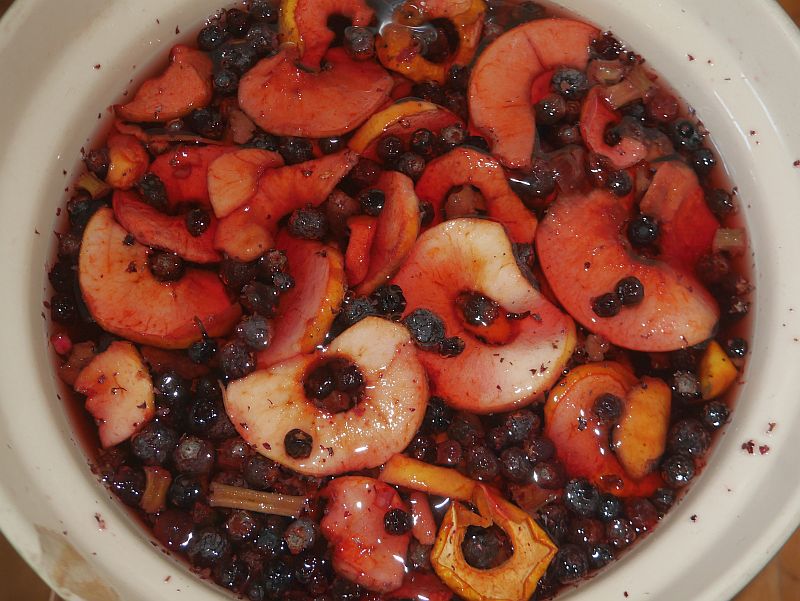
Nervous blackcap on apple
A male blackcap (munk) in the garden feeding nervously on an apple that a fieldfare (gråtrost) has been guarding attacking any bird that gets near.
…and then demonstrating that SIZE MATTERS as Herr Blackcap (munk) meets Hr. Hawfinch (kjernebiter) with guest appearances by Hr. Siskin (grønnsisik) and Hr. Brambling (bjørkefink)…..and there’s a finale!
Cornelian Cherries and Polish Olives in Trondheim
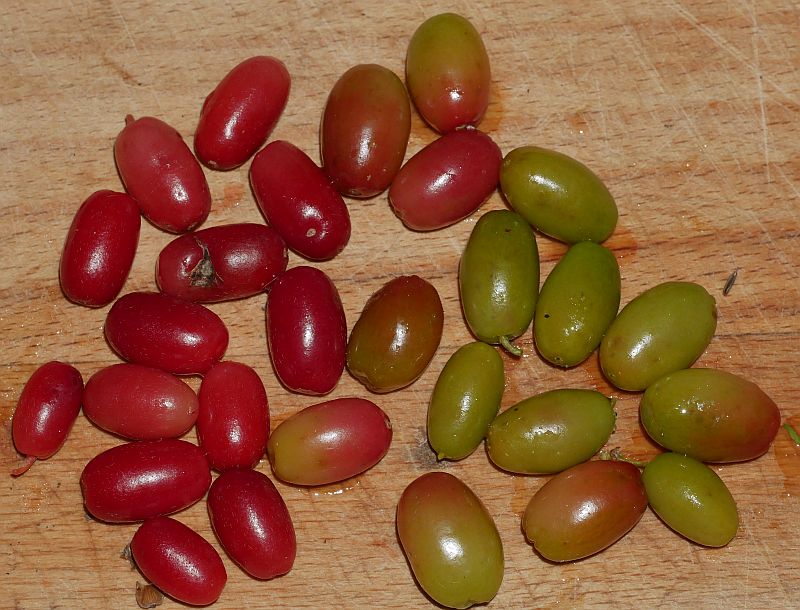
The bushes at Ringve, which were in a warmer and much sunnier spot than in my garden, were, on the other hand, laden with ripe fruit!
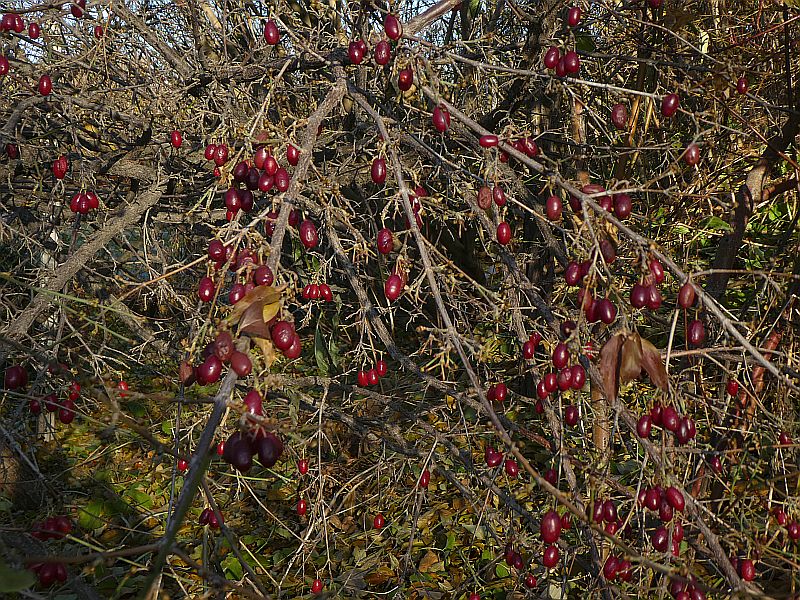

Although sour tasting raw, I was intrigued to see what they would taste like dried. My favourite dried fruit are sour cherries. Although not as good as those, I enjoyed the taste and they will this winter be part of my late winter dried fruit mixes that I eat every morning for breakfast once the fresh apples are finished.
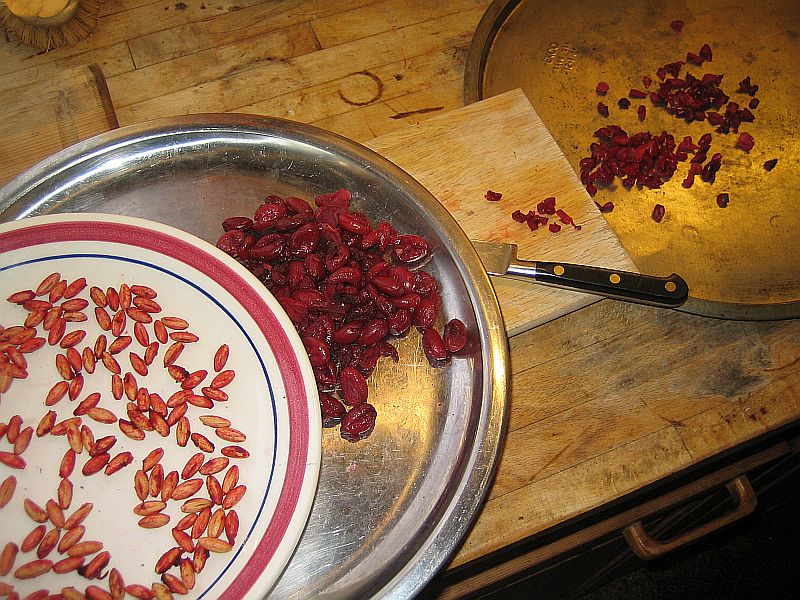
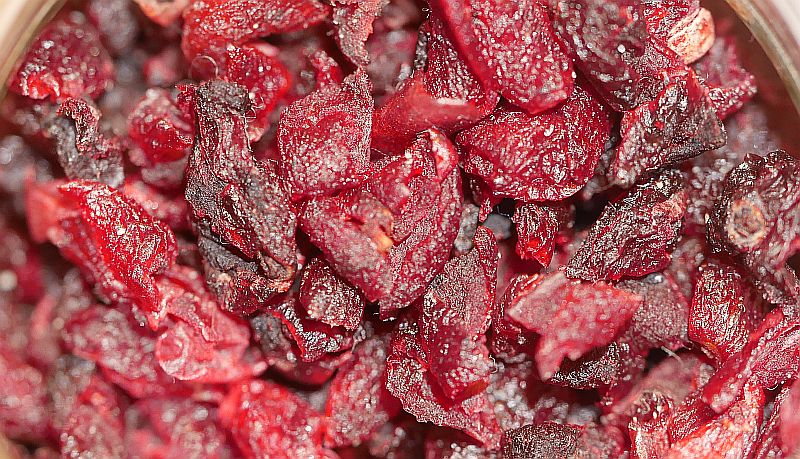
There are many varieties of cornelian cherry bred for bigger fruits, there are also pear shaped fruit varieties and yellow cultivars. (Edit: My friend Jesper Bay tells me that there’s also a black fruited variety!) There are also a number of ornamental varieties, such as the wonderful variegated form I once saw laden with fruit in the Oxford Botanical Garden (see the pictures below).
´Elegantnyj´, ´Jalt´, ´Kijevskij´, ´Lukjanovskij´, ´Vydubeckij´ are Russian in origin; ´Devin´, ´Olomoucky, ´Ruzynsky´, ´Sokolnicky´, ´Titus´ are from Czechoslovakia and Slovakia; ´Joliko´ and ´Fruchtal´ are Austrian and ‘Ntoulia 1’ and ‘Ntoulia 2’ are Greek.<
There are also partially self-fertile varieties.
Cornus mas has been cultivated commercially for centuries in the Caucasus and Central Asia. Turkey has today an important Cornelian cherry industry.
‘Kasanlaker’ is a large fruited cultivar which is available from nurseries in Western Europe.
I remember on a visit to Scandinavia’s oldest forest garden at Holma in Southern Sweden being shown a large Cornus mas in the centre of the city Lund on 1st September 2017! Here’s a picture of various forest gardeners harvesting the fruit (the tree was full):
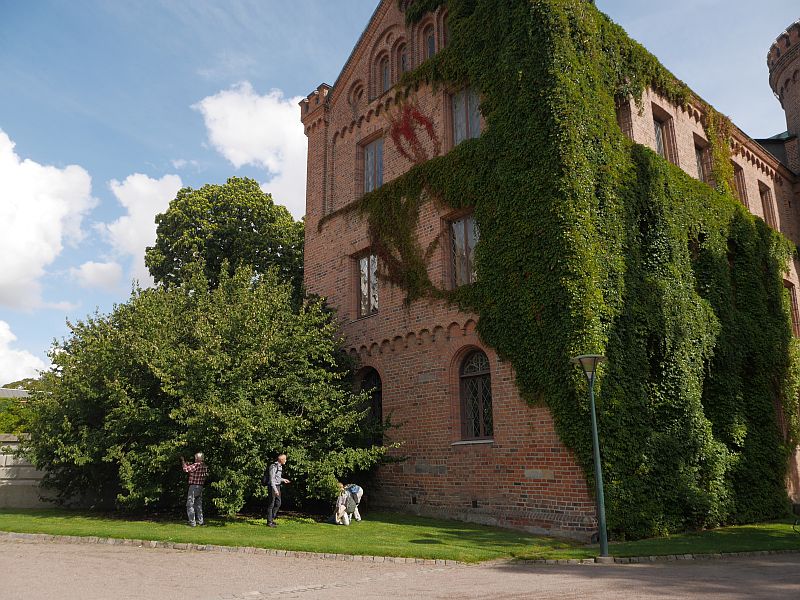
Reference
Oskar M. Szczepaniak, Kobus‑Cisowska, J., Kusek, W. and Przeo, M. 2019. Functional properties of Cornelian cherry (Cornus mas L.): a comprehensive review. European Food Research and Technology. 245:2071–2087
The last blackberries
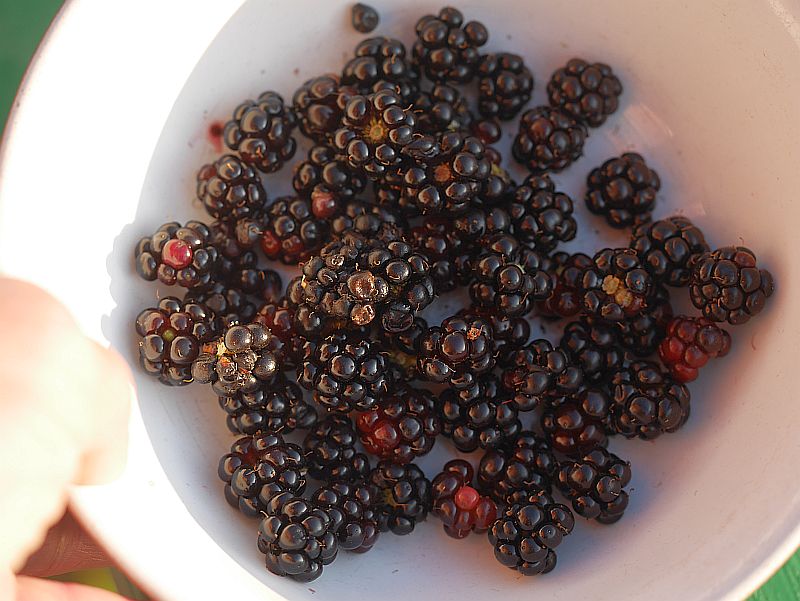
The return of the waxwings
The first two videos show waxwings eating apples opened up by fieldfares and blackbirds yesterday and also eating guelder rose (krossved) berries, so far not touching the elderberries (svarthyll).
Earlier in the day, the waxwings were hunting insects on birch trees and occasionally high into the air in pursuit of insects:
…and the morning after, they had discovered the yew berries!
…and on unharvested redcurrants (rips)….with a fieldfare (gråtrost) and brambling (bjørkefink) at the end of the video!
Thrush invasion
This year is a bumper year for rowans near the fjord, but poor a little inland due probably to frosts which didn’t affect us! Late frost at the time of fruit flowering iis very unusual where I am near the fjord (due to a combination of warmth from the fjord and the fact that there isn’t night at this time!). This has concentrated thrushes near the fjord where the food is!
- Blackbird on apples
2. Redwing and fieldfares on rowan
3. Fieldfare on rowan (this tree was more or less stripped of berries during the day)
The Last Garden
I’ve planted mostly fruit and berry bushes here, but also Xanthoxylum piperitum (Japanese pepper), one of which is thornless. There are also 3 types of Jostaberry, two selections of “Green-berried Blackcurrant”, three golden currants (Ribes aureum), three different black raspberries, two Elaeagnus umbellatus, Gooseberry Xenia and a couple of unknown Ribes spp. from Bo Blomqvist and Knut Poulsen!

